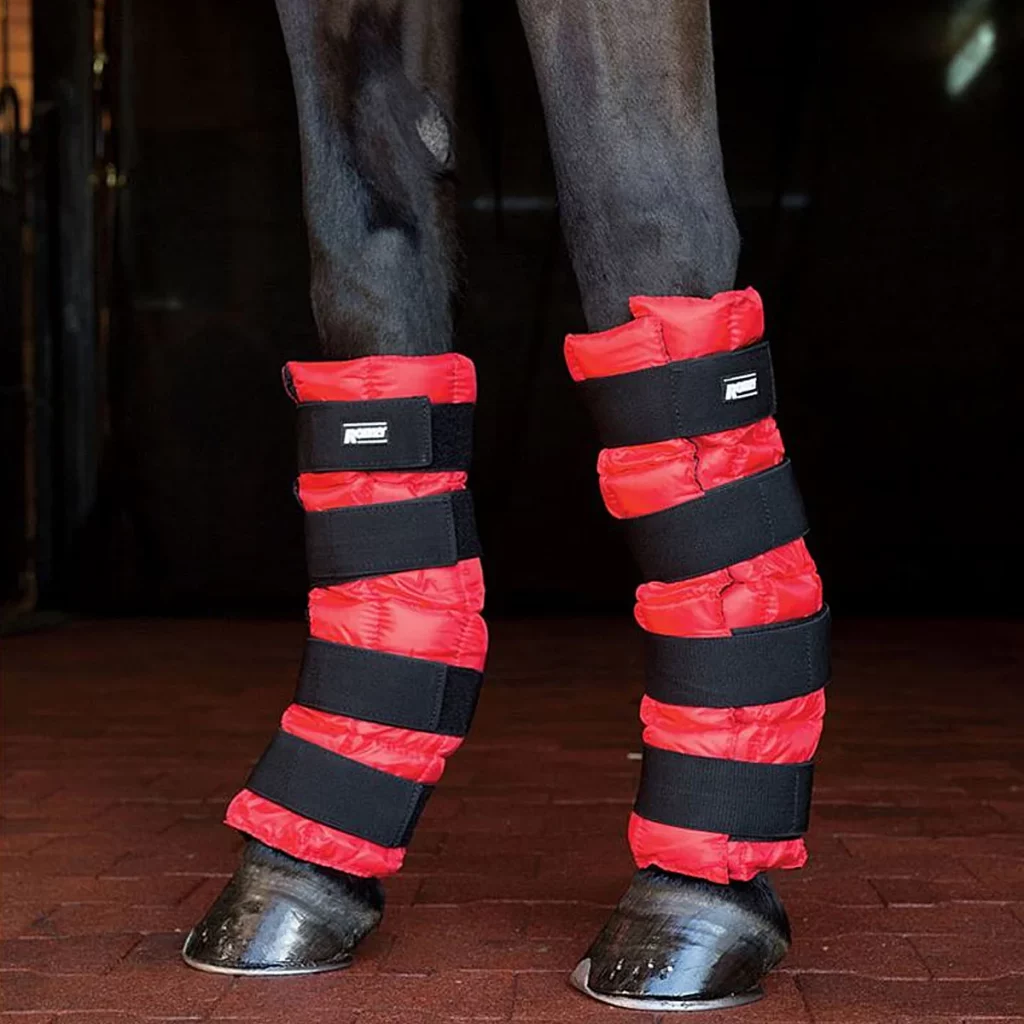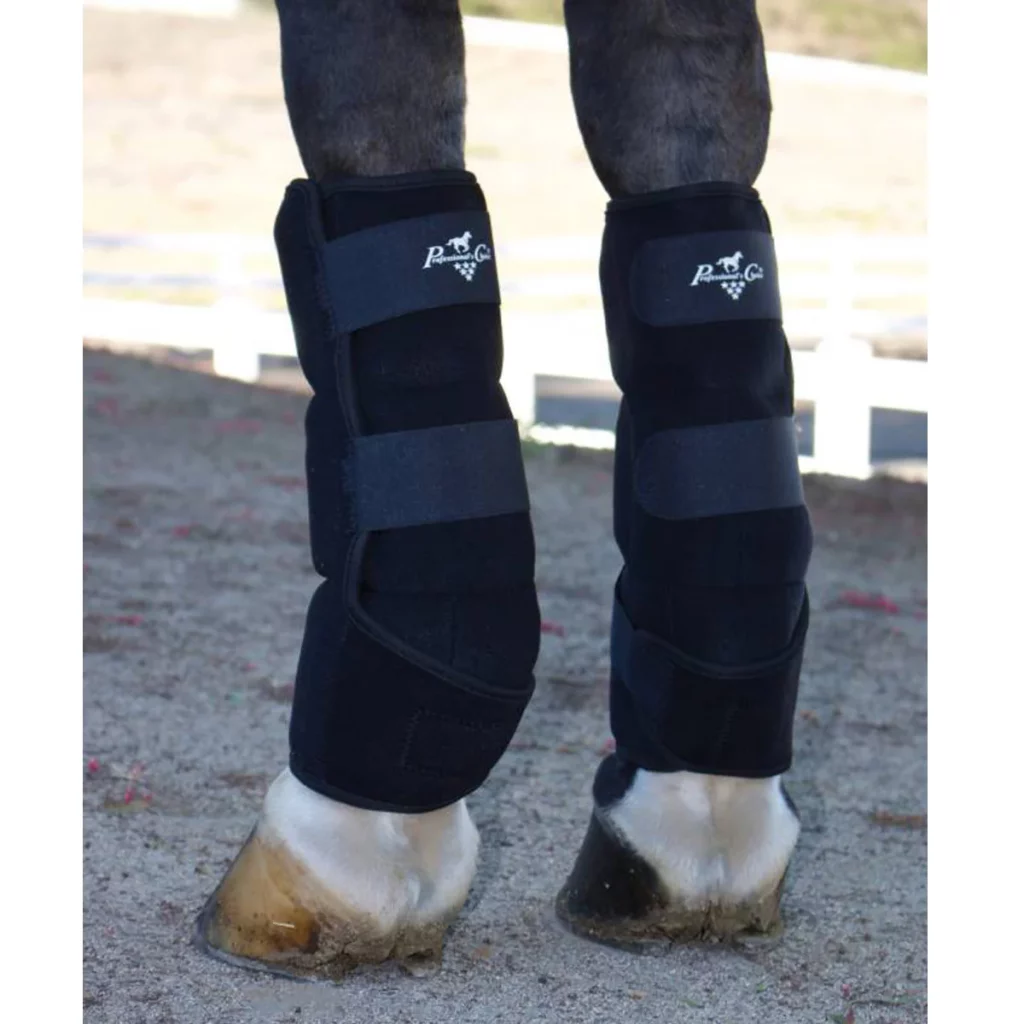
Are Ice Boots Good for Horses? Benefits, Application, and Top Picks
Farm House TackIt may sound strange to say that ice is trendy. But it’s true! In the last few years, we’ve seen a huge increase in using ice boots on horses after a hard lesson or show before setting them up in standing bandages overnight. These cooling boots reduce inflammation and support recovery, but are they the right choice for your horse? If you’re new to the idea, we’ll share the pros and cons of ice horse boots, when to use them, and what to consider before adding them to your horse’s care routine.
What are ice horse boots?
Ice boots are a type of horse boot designed to provide cold therapy to your horse after hard exercise. Typically, horse boots are designed to prevent trauma to a horse’s lower legs or hooves or promote healing when these areas are injured. Ice boots, however, are used after riding on rough terrain or coming in contact with obstacles at a high speed.
Unlike most horse shipping boots which are one piece, ice boots have two distinct parts: the cooling component (ice pack) and the harder outside shell. The outside shell is made of comfortable, durable materials like nylon that won’t be compromised by any condensation from the melting ice. The inside ice pack is usually surrounded by materials like foam typical in horse boot construction. When combined, the two elements form one horse boot. Ice boots are used after riding for cold therapy, a treatment designed to reduce inflammation. We’ll talk more about the different ways to use ice boots later.
What are the different types of ice boots for horses?
There are several types of ice boots, all designed to target different areas of the horse’s legs. Here are a few:
- Ice tendon boots: These boots target the muscles in a horse’s lower legs, which is a sensitive, injury-prone area.
- Ice hoof boots: Ice hoof boots focus on cooling hot hooves. They combine a rubber sole with elastic straps to keep the boots properly in place. They’re the perfect fusion of comfort, traction, and support.
- All-purpose ice wraps: As the name suggests, these wraps are versatile. They’re like a standard medical wrap that holds the ice pack in the affected area. They are commonly used for fetlocks, necks, shoulders, and upper legs.
- Stifle ice wraps: The stifle is the area where the tibia meets the femur (the bone that extends up to the hip). It’s similar to the human knees. Stifle ice wraps are ideal for treating injury and chronic stifle issues.
- Hock ice boots: The hock is the joint on the back leg, just above the fetlock and it’s one of the most important joints for your horse. Hock ice boots are ideal for arthritic or capped hocks.
- Full hind ice wraps: Hind wraps protect the entire fetlock area. They’re often used for protecting the back part of a horse’s leg from injuries caused by kicking, but in the case of hind ice wraps, they’re used for swelling associated with lymphangitis, cellulitis, or edema on the hind legs.
Are ice boots better than ice packs or cold hosing?
Ice boots for horses are a big improvement on the old methods of applying ice to your horse’s tendons. Similar to shipping boots or polo wraps, ice boots are applied to the lower part of your horse’s leg. While old icing methods included holding ice to the legs just like you would for a human sprained ankle, ice boots have made things a lot easier. They’re perfectly sculpted to fit your horse’s leg and evenly apply the cold to the excess heat or injury site.
In the past, cold hosing was also a common practice after a tough ride. However, to get the benefits of cold therapy, the affected area needs to be cooled to around 50 degrees Fahrenheit, which is colder than most of our hoses will get. Ice boots are much more effective in terms of temperature and consistency.
When should you use ice boots?
Ice boots are used for three main purposes: Injury treatment, injury prevention, and maintenance after riding. Let’s address each purpose.
How to use ice boots to treat injuries
For mild injuries, ice tendon boots treat localized swelling and reduce internal bleeding at the site of the injury. Ice may not be effective for every injury. When in doubt, as with most courses of equine therapy, it’s a good idea to ask your vet.
How to use ice boots to prevent injuries
Ice boots can also be used to prevent injuries, particularly after the horse has been at a gallop. After a gallop, the horse is more easily injured and it can be hard to tell that an injury has occurred. Sometimes, you won’t even know that the horse has been injured for a few days, costing you valuable time in addressing the injury. However, when you ice after a gallop, the ice prevents inflammation and stops an injury before it starts.
How to use ice boots for maintenance after daily exercise
You can use ice boots as maintenance for up to 40 minutes after daily exercise to keep your horse cool and ease any muscle aches.
Pros and cons of ice boots for horses
Pros of ice boots:
- Cover more surface area: Ice boots are able to cover more of a horse’s legs at one time than an ice pack. If you’re looking to ice for routine maintenance or injury prevention, targeting a broader area is helpful to reduce more excess heat.
- Address the horse’s major tendons: It can be difficult to focus cold hosing or ice on the area affected. Ice boots wrap directly around the affected tendons.
- Easily moldable: Ice boots are flexible and designed to fit your horse, even if they have differently sized legs or an inflamed area.
- Indirect cold contact: If you’ve ever put a plastic bag of ice directly on a sprained ankle, you know if starts to sting after a bit. It’s the same with horses. Sensitive horses may respond better to the indirect cold of ice boots.
- Uniform cooling: Ice buckets, packets, or cold hosing can apply the cold unevenly. Ice boots are specifically designed to spread the cold evenly over the affected area.
- Easy to use: Ice boots are easy to freeze and apply. They’re far less time-consuming to than cold hosing or switching out ice in plastic bags.
Cons of ice boots:
- Temperature decreases: Sudden decrease and increase in temperature can be uncomfortable for the horse. Not all ice boots stay cool consistently over a long period of time.
- Can slip and irritate the horse: If not applied correctly, ice boots can slip. Velcro straps are increasing in popularity to combat this phenomenon.
- Horses playing with boots can readjust: Your horse may try to nibble, kick, or play with their ice boots, causing them to slip and irritate the horse or fail to address the affected area.
- Can be too much for sensitive horses: Concentrated cold can be irritating or stressful for sensitive horses. Even though the cold is less direct than other methods, some horses don’t respond well to cold therapy.
- Doesn’t work for all injuries: Serious injuries or injuries that become re-aggravated over time may not be helped by icing. Always consult your vet. No form of cold therapy is a substitute for vet care.
- Difficult to keep cool: Many of our barns don’t have a fridge or freezer to hold ice boots between uses. Ice boots can require more forethought or having access to a cooler. Cold hosing is more convenient for many people for this reason.
How to apply ice boots
When you’re ready to use ice boots, let your horse cool down after exercise. Use a light hand when applying and make sure your horse reacts well to the first contact. Apply the boot snuggly but not tight and watch your horse through the duration to gauge their reaction. Follow the steps below to get the right fit every time.
- Place the gel pack in the freezer for 2-4 hours
- Wrap the cold pack around your horse’s leg ensuring the strap is pulled backward in the direction of your horse’s tail
- Check that the strap is closed facing towards you for a secure fit
- Leave the ice boots on your horse for up to 40 minutes of cooling therapy treatment
- Hand wash the outer part of the boots only
For many boots, such as the Ice Horse Suspensory Wraps, the ice packs are placed in the freezer separately from the outside. If you’re using this type of boot, just pop the ice pack in the freezer and allow it to cool for at least four hours before inserting the refrigerated ice packs into the boot and applying to your horse. It’s key to place the ice pack flat inside the freezer. This allows you to more easily manipulate it into the correct shape once inside the boot. Some other boots like Jacks Neoprene Ice Boots 9 Pockets have pockets where you can add crushed ice.
For other boots like 5/A Baker Ice Boots and the Roma Ice Boot, the ice component and the boot are all in one piece. It’s even easier to ice with this all-in-one solution. Just stick the whole boot inside the freezer as flat as possible, wait four hours, and then you’re ready to roll.
5 best ice boots for horses
Many different ice horse boots could be a great fit for your horse. We are big believers in ice boot technology at The Farm House. Here are a few of our top ice boot options for injury or maintenance.
1. Roma Ice Boot
We love this ice boot for the convenient, all-in-one ice and wrap combo. Take the boot straight from the freezer and wrap it on your horse’s leg. They’re super adjustable and you can buy them individually if you don’t need the whole pair.
2. Professional’s Choice Ice Boot
We love the Professional’s Choice Ice Boot because of the high-quality material and durability. The new suspensory strap provides an even distribution of cold therapy to the pastern and fetlock areas. The neoprene exterior insulates the frozen gel pockets, keeping the boots colder for longer.
3. 5/A Baker Ice Boot
We love the 5/A Baker® Ice Boots because they offer classic styling while being a secure, comfortable fit. They’re made of two layers of high-quality vinyl-coated nylon. As ice melts, water slowly drains through the foam inside. They have a great fit with an adjustable suspender to hold them upright and a zip-up style with a buckle strap.
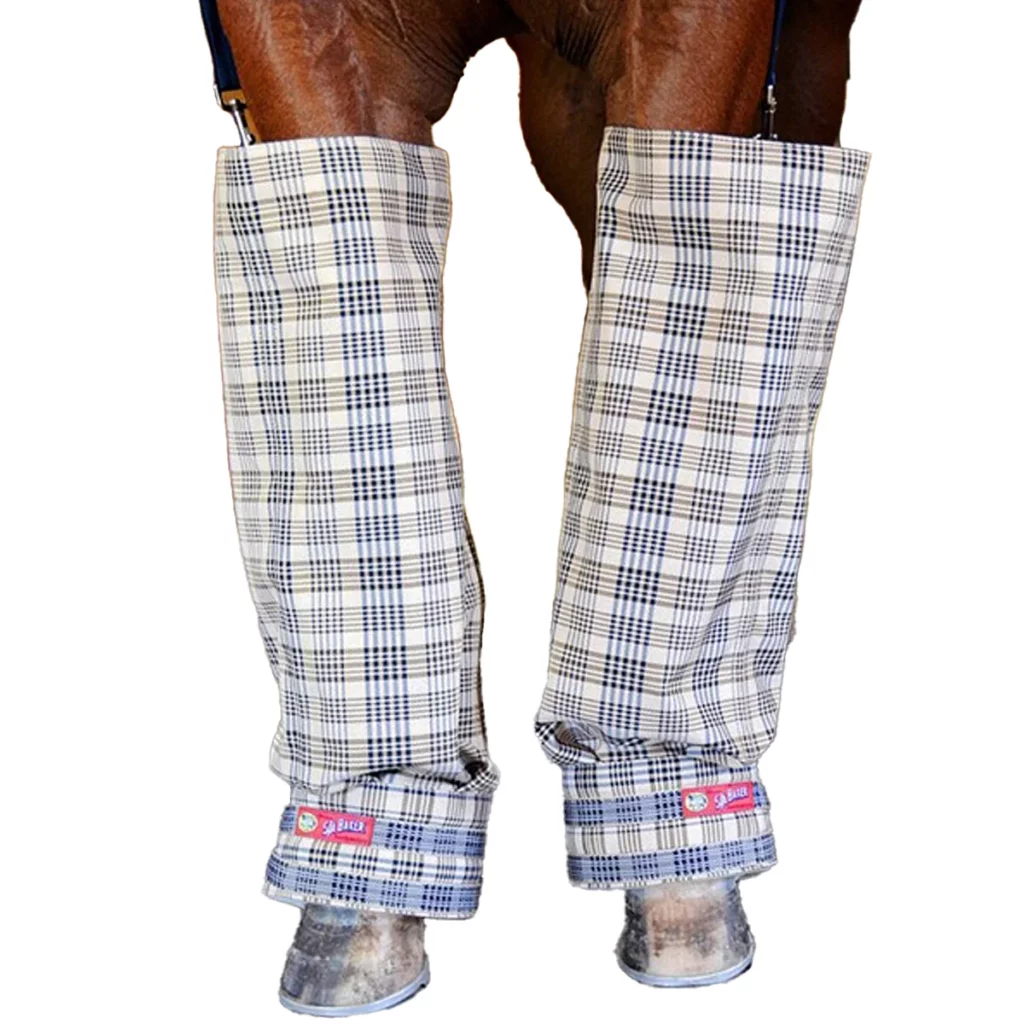
4. Cordura Ice Boots
We love these Cordura Ice Boots because they are made from durable material and come in a variety of colors. As ice melts, the water slowly drains through the foam of these vinyl-coated nylon boots. Zip up in style with buckle strap attachments to ensure a close, comfortable fit.
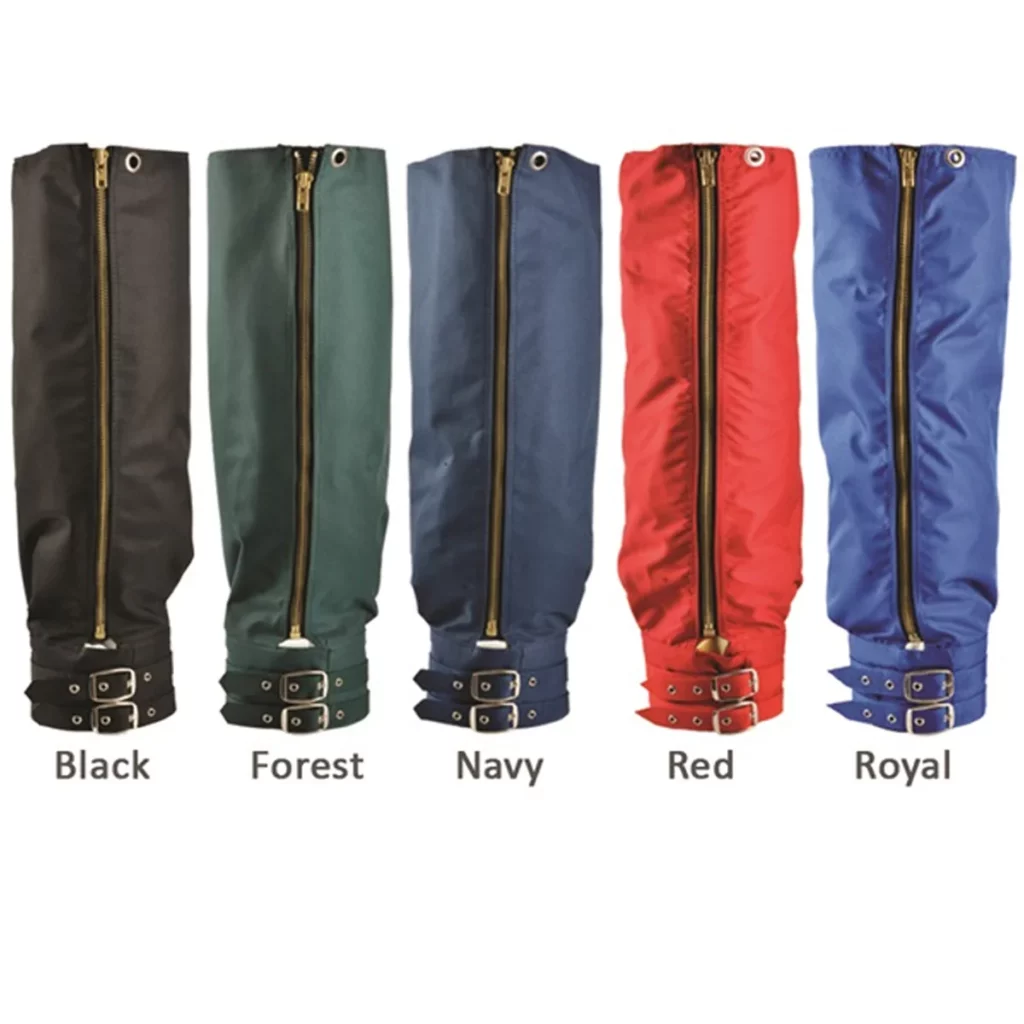
5. Ice Horse Tendon Wrap
We love these IceHorse® Tendon Wraps because they’re super easy to use. They provide uniform compression and coverage to reduce inflammation and heat of the tendons and ligaments surrounding the cannon bone area after work or injury. The Cold Capture inserts stay cold for over two hours and mold to the horse’s legs for maximum coverage. Specially placed Velcro closures allow for a secure tight fit every time.
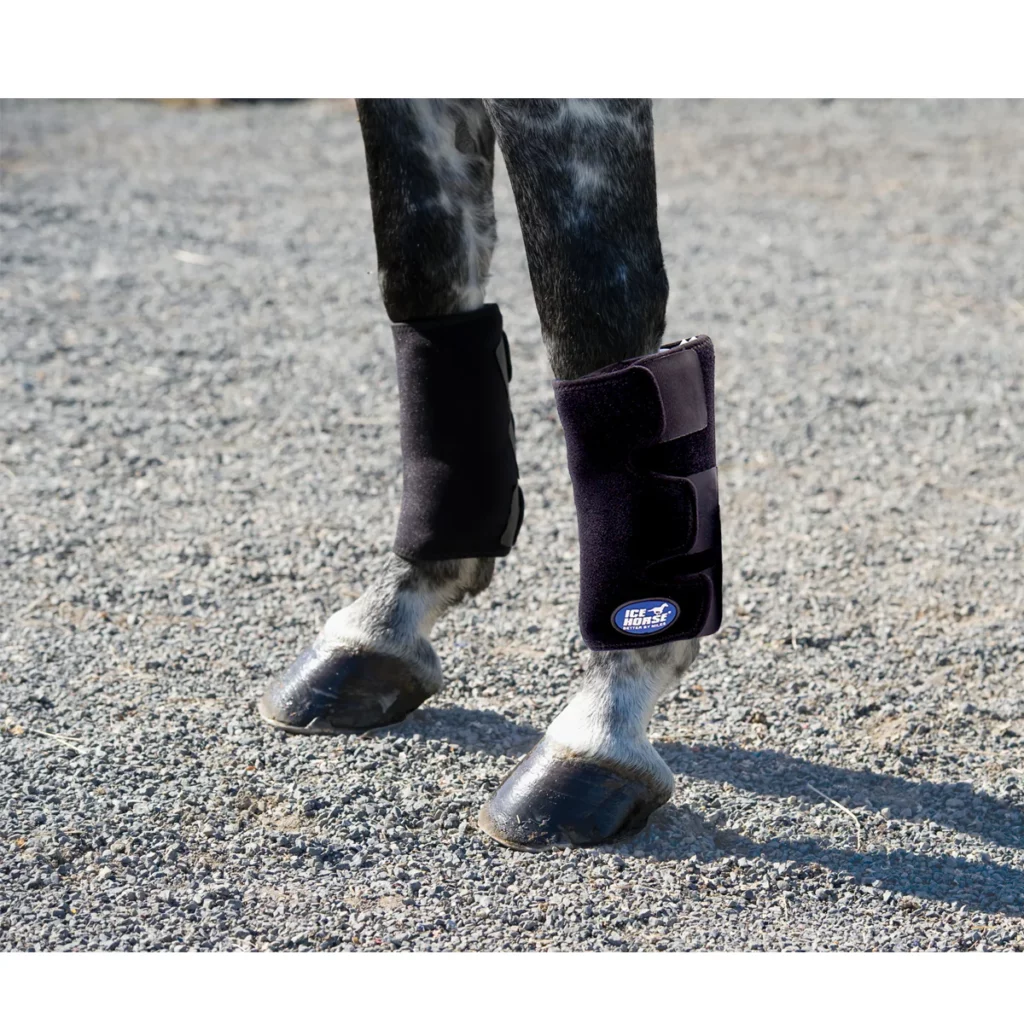
Support your horse with ice boots from the Farm House Tack
Ice boots are a great choice to help prevent or treat injuries for your horse. The increase in using ice boots on horses makes sense given how easy they are to use and how much more effective they can be than traditional methods. Whether or not to use ice tendon boots is a personal choice between you and your vet, but if you’re ready to try them, find your perfect pair online or in our stores. We hope this quick-start guide helps you keep your horse safe for all your rides!

